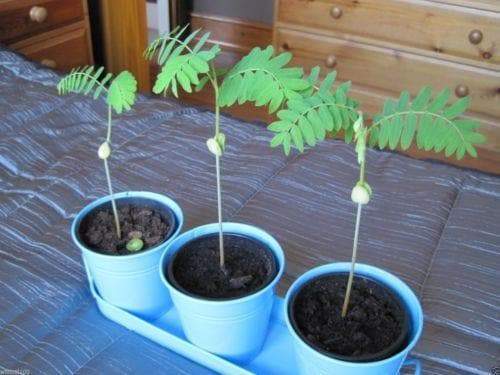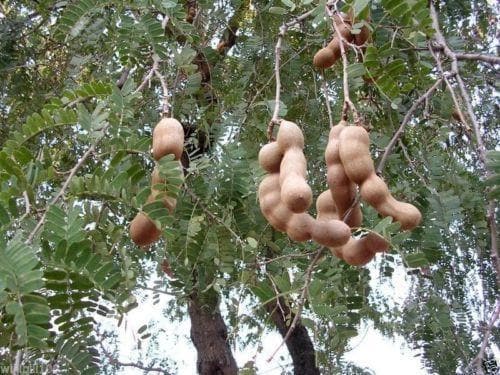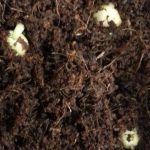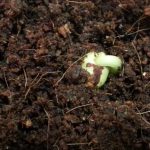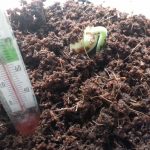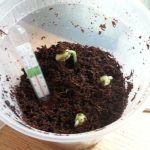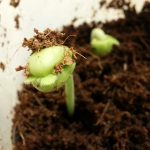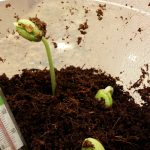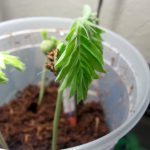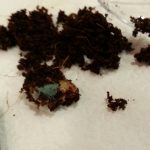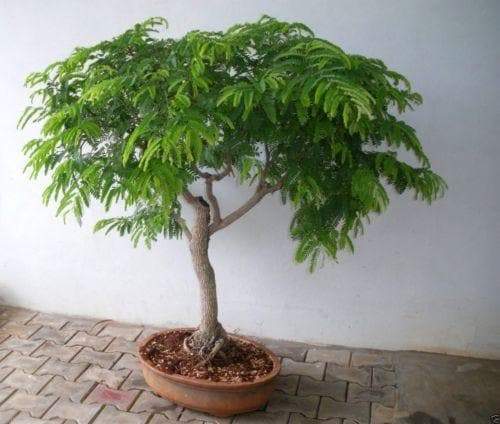
Tamarind SEEDs,TAMARINDUS INDICA,Sampalok,Indian Date ! tropical Fruit !
Most orders are processed by the next day
Select your desired size and/or color from the available options.
Common name: Tamarind, Sampalok, Indian Date
Family: Caesalpinioideae / Caesalpiniaceae
Ethnic names: Ambli, Imli, Pul, Tinti, Chinta, Amli
Origin: Native to tropical Africa
The Tamarind has a short, strong trunk, sometimes slightly buttressed to bear the weight of the wide, spreading crown. The thick bark is almost black and covered with longitudinal fissures and horizontal cracks.
In May and June the small, scented flowers appear in loose, terminal and lateral sprays. Inconspicuous amongst the mass of foliage, they are found, on close examination to have an unexpected beauty. Each flower is rather more than one inch across and the four creamy or yellow sepals spread to the full width, appearing more like petals. The actual petals are three in number, one being smaller. They, also, are creamy or yellow but are covered with a fine net-work of deep red veining; the edges are closely pleated. Three green stamens and one long pistil curve from the centre. Before starting to open the buds are enclosed in two sheaths, often crimson in color and these make a pretty variation on the flower sprays. The pods, which are usually fairly numerous, vary considerably in size and shape. Many are sickle-shaped, some like long, thick beans and others nearly as short as their breadth. They are at first green, but a dun, felt-like film over the green makes them, appear brownish. When ripe they are buff and brittle. The seeds, from one to ten, are contained in a fibrous pulp and the pod is more or less constricted between these seeds. In some varieties of Tamarind the pulp is brown and acid, in others it is sweet but the best is considered to be the one with reddish pulp.
| There are many uses to which the fruit is put. The pulp is a popular ingredient for curries and preserves. Sometimes it is pressed, preserved and sold by weight in the bazaars. It also makes a good sherbert. Medicinally it is used as a laxative. The seeds, ground to powder and boiled to a paste with gum, make a strong cement; from them, too, is obtained a substitute for wheat or other flour, used by jungle people to make chapattis. The husks of the seeds have even been employed for road surfacing. It was also discovered that from the seeds could be made a cheap, efficient substitute for cereal starch which is used for sizing cotton yarn, jute fabrics and woollens. |
Leaves and flowers, too, are useful as they are both edible and the leaves make a good poultice for boils; also an infusion from them makes a fine yellow dye which is used to give a green color to silks previously dyed with indigo.
The wood is highly prized, though hard and difficult to work and it is unfortunate that the heart wood is so small. However it is widely used for making wheels, mallets, furniture, oil and sugar mills, etc.
Country people have a prejudice against sleeping under Tamarinds because they say the trees exude unhealthy vapours. This is no doubt correct to a degree as the cloth of tents pitched under Tamarinds in wet weather become discolored and rotten after a time; many plants will not grow beneath them but it is a mistake to suppose that this applies to all herbs and shrubs.
Germinate Tamarind Seeds
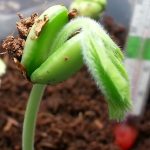 Tamarind Trees(Tamarindus Indica) are attractive trees, with interesting leaf structures. They make great bonsai specimens, and add interest by being nyctinastic. What is a nyctinastic plant? Basically, they fold leaves downwards with the changes in light, environmental factors, and physical stress.
Tamarind Trees(Tamarindus Indica) are attractive trees, with interesting leaf structures. They make great bonsai specimens, and add interest by being nyctinastic. What is a nyctinastic plant? Basically, they fold leaves downwards with the changes in light, environmental factors, and physical stress.
Tamarind seeds aren’t necessarily difficult to germinate, and they don’t necessarily need a “How To Germinate Tamarind Seeds” article per se, but without special treatment you can wait a long time for Tamarind seeds to become imbibed and germinate. Typical germination can take months. The longer a seed sits in soil, the greater the chance it will rot, become the victim of a pest, the germination rates will be unpredictable, and if your garden isn’t organized it will simply use up space, and maybe even be forgotten.
Our preferred method can reduce the process to less than two weeks, and provide instant gratification. We like that, and often times its not something we get from a garden.
Seed Preparation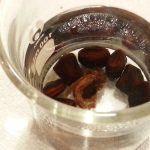
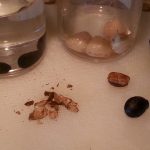 To speed the process and improve germination rates, scald the the seeds by pouring hot water over them. We mean Hot!, as in water that has been brought up to a boil. Let the seeds soak in a small amount of the hot water(less than 4 ounces), until the water is room temperature again. The outer seed coat should soften and a layer begin to slough off. This may not be immediately apparent, and will require a few repeat treatments.
To speed the process and improve germination rates, scald the the seeds by pouring hot water over them. We mean Hot!, as in water that has been brought up to a boil. Let the seeds soak in a small amount of the hot water(less than 4 ounces), until the water is room temperature again. The outer seed coat should soften and a layer begin to slough off. This may not be immediately apparent, and will require a few repeat treatments.
Repeat the process a few more times until a sublayer of seed has been exposed, or can easily be exposed by removing the seed coat with your fingers. Using an electric tea kettle greatly speeds the process. Caution should be taken not to scald a seed that has no seed coat, or one that can easily be removed, or you will effectively cook and sterilize seed.
Let the seeds, with removed seed coats, sit in a final soak of room temperature water. The soak should only last a few hours, growth hormones, Superthrive, or other seed treatments can be added for this final soak.
Prepare your Planting media
For Tamarind seeds we used a pure coco fiber mix. Simply add warm water, mix until the coco fiber is saturated. Squeeze additional water from the coco so it becomes a little ‘fluffy’. Some coco fiber requires rinsing to remove salts. Read your coco fiber packaging to see if it recommends rinsing to leach out salts.
Sowing Seeds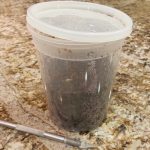 Select a deep, clear container, such as the ones used for soups when you order take out food. Fill the container at least 3 1/2 inches deep with the coco fiber we previously prepared. The clear pots allow us to easily monitor how much moisture is in the container, and lets us know when to add water or let vent more completely.
Select a deep, clear container, such as the ones used for soups when you order take out food. Fill the container at least 3 1/2 inches deep with the coco fiber we previously prepared. The clear pots allow us to easily monitor how much moisture is in the container, and lets us know when to add water or let vent more completely.
Gently poke one or two holes per pot, and place a seed on its side, in each hole. Leave seeds about a minimum of one inch apart. To prevent molds responsible for seed rot from spreading to other seeds. Cover the seeds with 1/4 inch of coco coir fiber. Mist pots from above, then cover, with the lid slightly cracked.
Germinate
A well lit window, in a warm area of a house may work, but the GERMINATION CHAMBER is our favorite, and so far our most effective, way to germinate any small tropical seeds.
Coco coir can retain a lot of moisture, and provides a great environment for seed germination, but also for mold and seed rot. So forget being patient, gently take a peak everyday t your seeds, and remove any seeds that look like they are molding.
Seeds that are viable will stay light colored, a radical should emerge and turn downwards, and the sprouted seed will start a greening process.The seedling will eventually lift the seed, and the cotyledon leaves will emerge.
Prevent over watering or keeping too moist as your seedlings grow to prevent damping off. Given the nutrient free quality of coco fiber, a very dilute water soluble fertilizer with a fairly even blend of nutrients, and plenty of micronutrients should be applied with discretion.
LET OUR CUSTOMER SPEAK FOR US

![[Seeds] - Caribbeangardenseed](http://caribbeangardenseed.com/cdn/shop/files/gift-card-gift-card-1_1024x1024_dfa857db-9150-4315-a362-7f0bb3fb9c47_60x28.png?v=1703978838)

